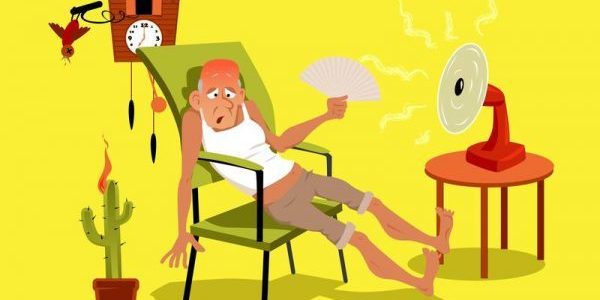Air Conditioning & Humidity Control
We have all heard the saying, “it’s Not the Heat, It’s the Humidity!”. The Ottawa Valley is well known more for high humidity, than scorching heat.
When it comes to Air Conditioning, your Home, dealing with air cooling is only part of the comfort equation.
The “feels like” temperatures on the weather report that are usually several degrees hotter than the actual temperature, when often, the actual temperature would comfortable, but the humidity makes it uncomfortable and feel hotter. Cooling your home without effectively removing humidity can make matters even worse – cool and damp.
Just Cooling is Not Good Enough
Air Conditioners are not simply cooling units, but are complex mechanical systems that depend on a wide variety of conditions to operate properly. Air Conditioners are designed to have a specific amount of refrigerant, known as the “charge”. They are designed to have a specific amount of air flow across the coils, to remove a specific amount of heat – and humidity. If any of these things change, the system will have problems. It is a fine balance.
- Reduced air flow can lead to the indoor coil freezing up, or too much air flow, and you loose capacity and efficiency.
- If the refrigerant charge is low, several issues may arise, including lower capacity, or freezing of the system.
- If airflow across the outdoor (condenser) coil is reduced, the ability to reject heat outdoors is reduced the capacity and efficiency suffers.
In areas like Ottawa, where humidity is typically high, the situation is even more complex. Too much air and there will be less de-humidification, leading to high indoor humidity. If the airflow gets too low, the evaporator coil may freeze. This can damage the compressor – leaving you with an expensive repair bill and no cooling!
Proper maintenance can avoid most of these issues, but effectively removing humidity depends on the actual system and installation.
Removing Humidity
Most Central Air Conditioning Systems are capable of removing humidity from the air in your home. How effectively is a matter of the outdoor unit (condenser) and indoor coils (evaporator) installed, as well as the furnace. Larger indoor coils, and a furnace with a variable speed blower will do a better job at higher efficiency. The indoor coil is a very important part of the system, but hardly ever mentioned when buying an Air Conditioner.
To remove humidity, an air conditioner has to be running. Entry level systems operate in “on” or “off” mode at a single capacity. If sized properly, it will run a lot at peak temperatures, but will be on far less frequently and for shorter duration’s in more typical weather. A high efficiency 2-stage or variable capacity system will do a far better job. These will run longer on lower power, and have a much better ability to remove humidity. High efficiency systems are able to control the temperature more precisely, eliminating cold or hot swings and preventing humidity build up.
In addition to the added comfort you’ll feel with the lower humidity a high efficiency system can provide, they also run much more quietly. High efficiency, variable speed systems are much more energy efficient, saving you money on the energy bill.
The Bottom Line
The indoor coil and the furnace are important parts of an Air Conditioning System. Each part of the system will effect the comfort level and efficiency of the system, and therefore, your energy bill. Lower humidity levels translate into improved comfort and less energy used to maintain a comfortable home.
Air Conditioner Maintenance is extremely important to maintain efficiency and comfort. Our Service Department would be pleased to check out your entire system.







